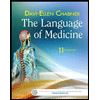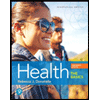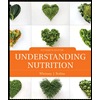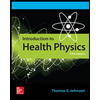
Concept explainers
Introduction: The random assignment mainly deals with profound intervention and control groups which have the ability to reduce the potential influence of confounding factors.
Answer to Problem 1RQ
Correct answer: “The major purpose of random assignment in a clinical trial is to reduce selection bias in the allocation of treatment.” Hence, the correct answer is option e.
Explanation of Solution
Reason for the correct answer:
Selection bias is the bias introduced by the selection of the controls and cases for a study that mainly depends on the exposure. It must be controlled at the design level. This could be accomplished by reconsidering the incident cases and population controls.
One can majorly choose and assign a concurrent comparison group by using a randomization process due to the inbuilt capacity of random assignment. It also focuses on the chance factor that allows the statistical hypothesis to determine the significant priorities of the trial that are conducted in clinical settings. Therefore, random assignment decreases the selection bias in allocation of treatment.
Option e. is given as “Reduce selection bias in the allocation of treatment”.
Random assignment minimizes the selection bias in the allocation of treatment.
Hence, the correct answer is option e.
Reasons for incorrect answers:
Option a. is given as, “Help ensure that study subjects are representative of the general population”.
Random assignment does not help to study subjects that are representatives in a general population as it determines group assignment that tests the significance levels.
Hence, option a. is incorrect.
Option b. is given as, “Facilitate double blinding (masking)”.
Random assignment in a clinical trial does not facilitate the masking as the double binding will only control information bias and not confounding.
Hence, option b. is incorrect.
Option c. is given as, “Facilitate the measurement of outcome variables”.
Random assignment does not help to measure the outcome variables.
Hence, option c. is incorrect.
Option d. is given as, “Ensure that the study groups have comparable baseline characteristics”. Random assignment does not help in the comparison of baseline characteristics of a study group.
Hence, option d. is incorrect.
Hence, the options a., b., c., and d. are incorrect.
Random assignment minimizes the selection bias in the allocation of treatment.
Want to see more full solutions like this?
 The Language of Medicine, 11eHealth & NutritionISBN:9780323370813Author:Davi-Ellen Chabner BA MATPublisher:Saunders
The Language of Medicine, 11eHealth & NutritionISBN:9780323370813Author:Davi-Ellen Chabner BA MATPublisher:Saunders Gordis EpidemiologyHealth & NutritionISBN:9780323552295Author:David D. Celentano, Moyses SzkloPublisher:ELSEVIER
Gordis EpidemiologyHealth & NutritionISBN:9780323552295Author:David D. Celentano, Moyses SzkloPublisher:ELSEVIER Nutrition Through The Life CycleHealth & NutritionISBN:9781337919333Author:Brown, Judith E.Publisher:Cengage Learning,
Nutrition Through The Life CycleHealth & NutritionISBN:9781337919333Author:Brown, Judith E.Publisher:Cengage Learning, Health: The Basics (13th Edition)Health & NutritionISBN:9780134709680Author:Rebecca J. DonatellePublisher:PEARSON
Health: The Basics (13th Edition)Health & NutritionISBN:9780134709680Author:Rebecca J. DonatellePublisher:PEARSON Understanding Nutrition (MindTap Course List)Health & NutritionISBN:9781337392693Author:Eleanor Noss Whitney, Sharon Rady RolfesPublisher:Cengage Learning
Understanding Nutrition (MindTap Course List)Health & NutritionISBN:9781337392693Author:Eleanor Noss Whitney, Sharon Rady RolfesPublisher:Cengage Learning Introduction To Health PhysicsHealth & NutritionISBN:9780071835275Author:Johnson, Thomas E. (thomas Edward), Cember, Herman.Publisher:Mcgraw-hill Education,
Introduction To Health PhysicsHealth & NutritionISBN:9780071835275Author:Johnson, Thomas E. (thomas Edward), Cember, Herman.Publisher:Mcgraw-hill Education,





